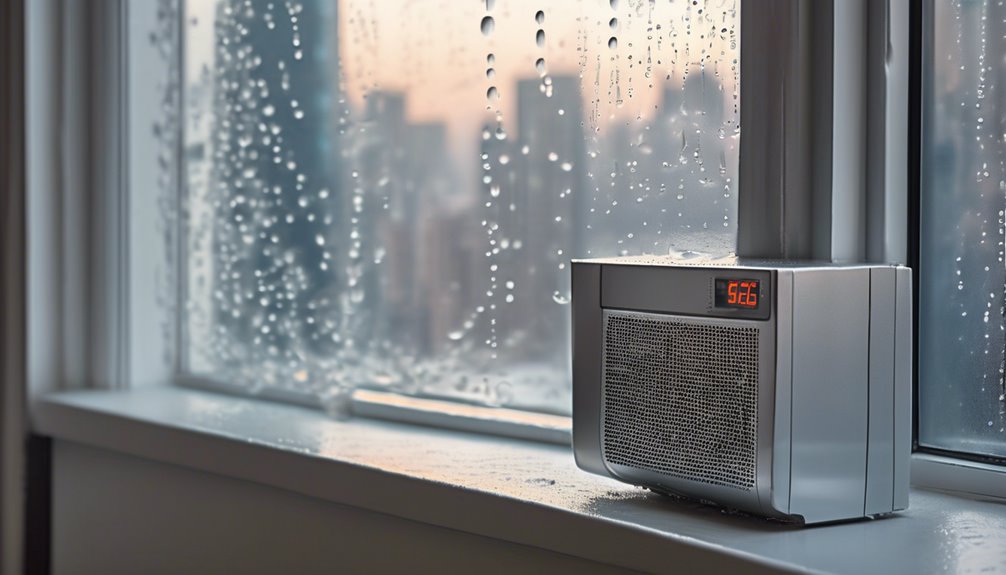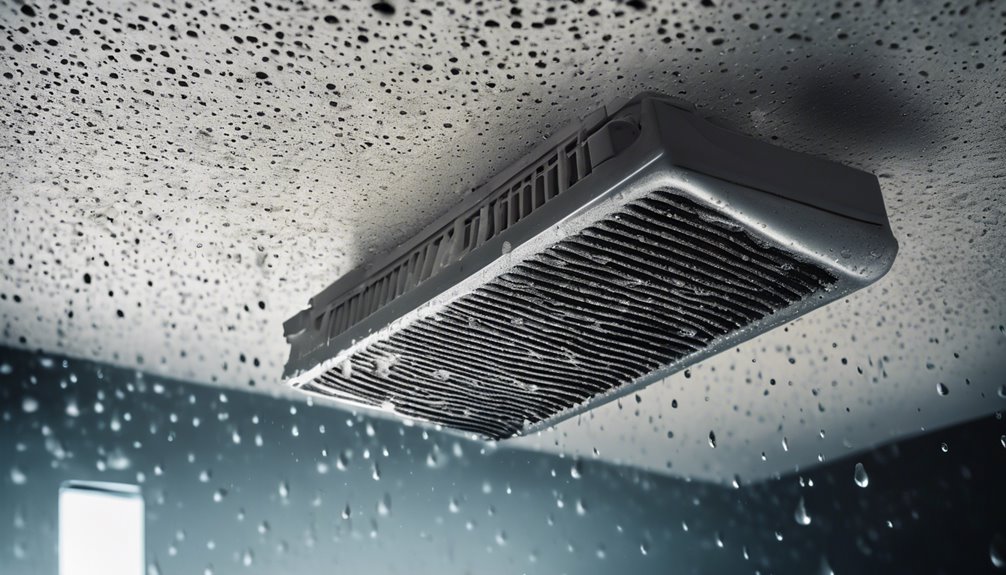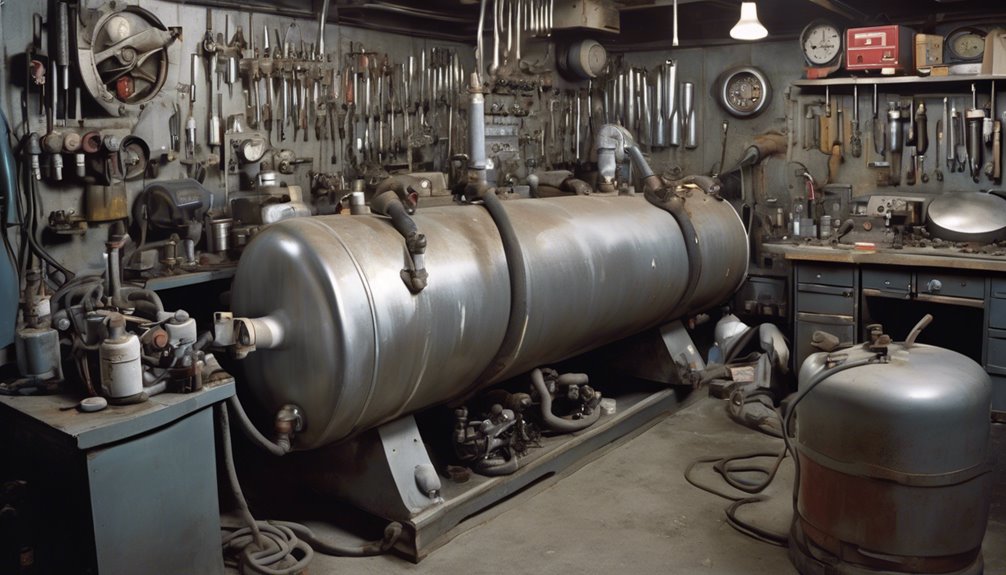If your window AC isn't cooling your space like it should, it's probably due to one of five simple mistakes. You might've installed it incorrectly, forgotten to clean the air filters and coils, or have a faulty thermostat. Maybe you're not providing enough power or there are leaks around the unit. The good news is that these fixes are easy and can make a big difference. Want to get your AC running smoothly again? Look closer at these common mistakes to find the solution.
Key Takeaways
- Insufficient clearance around the unit can restrict airflow, causing the AC to work inefficiently and reducing cooling capacity.
- Dirty air filters and coils can reduce the unit's cooling performance, and regular cleaning or replacement is necessary.
- Faulty thermostats or inaccurate temperature readings can mislead the AC, causing it to malfunction or blow warm air.
- Insufficient power supply or electrical issues can lead to subpar performance, higher energy bills, and potential AC damage.
- Leaks and poor sealing around the unit can let hot air in and cool air out, making the AC work harder than necessary.
Improper Installation and Maintenance
If you didn't install your window AC correctly, it's likely the reason it's not cooling your space.
A common mistake isn't leaving enough clearance around the unit. Insufficient clearance restricts airflow, causing the AC to work inefficiently. You should ensure there's at least a few inches of space on all sides.
Another issue is uneven mounting, which can cause the AC to vibrate and reduce its cooling capacity. Make sure the unit is level and securely fastened to the window frame.
Double-check your installation and correct any mistakes. By doing so, you'll be able to enjoy a cooler and more comfortable space.
Dirty Air Filters and Coils
Proper installation is just the beginning – now it's time to ensure your window AC's internal components are in good working order.
Dirty buildup on the air filters and coils can significantly reduce your unit's cooling performance. Check and clean the filters regularly to prevent dirt and dust from accumulating.
You can simply wash them with soap and water, or replace them if they're beyond cleaning. Don't forget to clean the coils as well, as they can also collect dirt and debris.
Use a soft brush or vacuum to remove any dirt or dust. By keeping your filters and coils clean, you'll be able to breathe easy and enjoy a cooler space.
Thermostat Issues and Inaccurate Readings
Your window AC's thermostat plays a crucial role in regulating the temperature, but issues with it can leave you sweating.
If your thermostat is faulty, it may misread the room temperature, causing your AC to malfunction. Faulty sensors can lead to inaccurate readings, making your AC think the room is cooler or warmer than it actually is.
This can result in inadequate cooling or overheating. Moreover, temperature miscalibration can also occur, causing your AC to blow warm air instead of cool air.
Check your thermostat's sensors and calibration to ensure they're functioning correctly. If you're still unsure, consider consulting the user manual or seeking professional assistance.
Insufficient Power and Electrical Issues
A window AC that's not receiving sufficient power can't cool your space efficiently.
If your unit isn't getting the power it needs, it will struggle to operate at its best. This can lead to inadequate cooling, increased energy bills, and even damage to the AC itself.
Insufficient power supply can lead to subpar performance, higher energy bills, and even AC damage.
Three common electrical issues that might be affecting your window AC's performance are:
- Voltage fluctuations: If the voltage in your home isn't consistent, it can cause your AC to malfunction or not cool properly.
- Electrical surges: A sudden spike in electrical power can damage your AC's internal components, leading to cooling issues.
- Tripped circuit breakers: If your AC is drawing too much power, it can trip the circuit breaker, shutting off the unit entirely.
Leaks and Poor Sealing Around the Unit
Leaks and poor sealing around the window AC unit can be just as detrimental to its cooling performance as electrical issues.
You mightn't think about it, but even the tiniest gaps can let hot air in and cool air out, making your unit work harder than it needs to.
Check the window gaps around the unit for any openings, and apply a sealant to close them up. Make sure the unit is properly secured in the window, and that the window is closed tightly.
A good sealant application can make a big difference in your unit's performance. By addressing these leaks and poor seals, you can help your window AC cool more efficiently and effectively.
Frequently Asked Questions
Can I Use a Window AC in a Room With High Ceilings?
You can use a window AC in a room with high ceilings, but you'll need to consider air circulation. Run ceiling fans in a counterclockwise direction to circulate cool air, making the most of your window AC's cooling power.
Will a Window AC Cool a Room With Multiple Windows?
You're wondering if a window AC can cool a room with multiple windows. It can, but consider direct sunlight and window orientation. If most windows receive direct sunlight, the AC will work harder, and if windows face west, it'll be even tougher.
Can I Install a Window AC in a Casement Window?
You can install a window AC in a casement window, but you'll need a Casement adapter to fit the unique window constraints, ensuring a secure and proper installation that won't compromise the AC's performance.
Does a Window AC Use More Energy Than a Central AC?
You're wondering if a window AC uses more energy than a central AC. Generally, central ACs consume more power due to their larger size and cooling capacity, but window ACs can be less efficient, increasing energy consumption per square foot.
Can I Run a Window AC With an Extension Cord?
You can run a window AC with an extension cord, but you're taking a risk. Make sure the cord is rated for the AC's power draw, and avoid overheating or damage by respecting cord safety and power limitations.
Conclusion
You've checked the window AC's installation, cleaned the filters and coils, ensured the thermostat is working correctly, and verified the power supply is sufficient. You've also sealed any gaps around the unit. If your window AC still isn't cooling enough, it may be time to consider replacing it. Remember, even with proper maintenance, window ACs have a limited lifespan. If you've done everything right and the issue persists, it's likely the unit itself is the problem.



